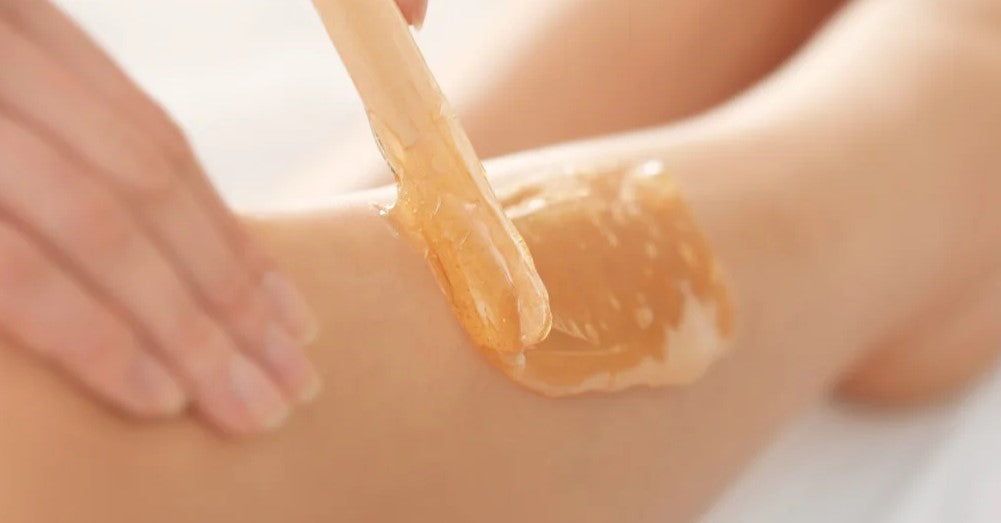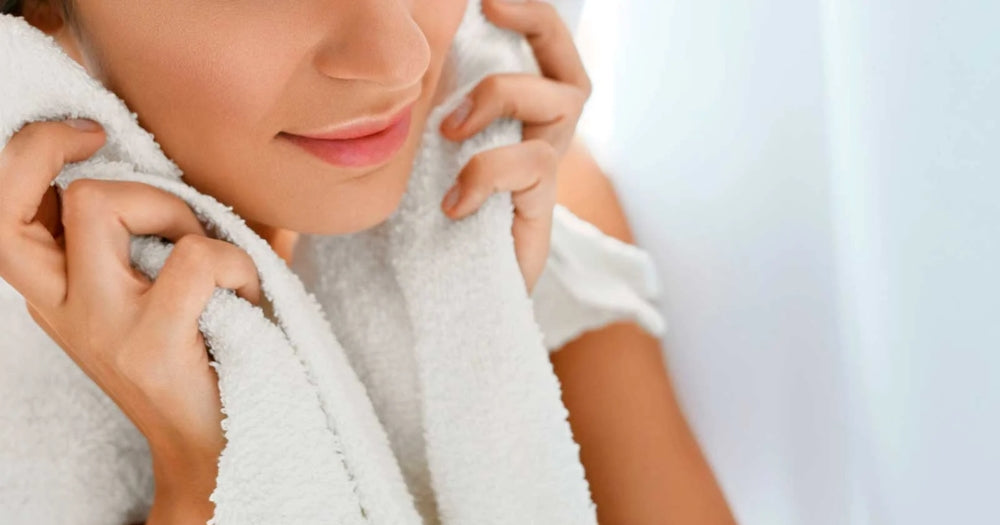Folliculitis is a common skin condition that most people face after waxing. It is caused by the inflammation of the hair follicles. This inflammation causes painful little bumps to form on your skin. This is called folliculitis.
It is usually triggered by hair removal methods such as waxing or plucking, as these can irritate your hair follicles. Wearing tight clothing or taking a hot bath after shaving can also trigger these skin problems.
So, if you are also suffering from folliculitis after waxing, read the article to find out the solution.
Table of contents:- Part 1: Why do you get folliculitis after waxing?
- Part 2: How to prevent folliculitis after waxing?
- Part 3: How to treat folliculitis after waxing?
- Part 4: How long does folliculitis last after waxing?
- Part 5: When should you see a doctor?
- Part 6: Alternative method for hair removal: IPL hair removal
- Part 7: Conclusion
Why do you get folliculitis after waxing?
Before you ask the question Before you answer the question “ Why do I get folliculitis after waxing? ” and start the treatment, you should make sure whether it is folliculitis or not.
Common symptoms of folliculitis
The most common manifestations of folliculitis are:
- Small red and inflamed bumps or pustules appear around the waxed area
- Itching or burning of the skin in the area of the bump, causing discomfort
- Sensitive and painful skin
- Formation of pus-filled blisters that later open and form crusts
- Possible development of blackheads
Causes of folliculitis after waxing
Now let's understand what causes folliculitis after waxing. It can be superficial or deep due to the following causes:
- Hair follicle trauma: Waxing involves violently ripping out hairs at the roots. This can traumatize your hair follicles, make your skin sensitive, and cause folliculitis.
- Bacterial contamination: Your skin is sensitive after waxing and easily susceptible to microbes. So, if you don't maintain proper hygiene, bacteria, usually Staphylococcus aureus, will penetrate the skin and lead to the formation of purulent bumps.

How to prevent folliculitis after waxing?
Wondering how to avoid folliculitis after waxing? The following steps can help you minimize the risk of folliculitis after hair removal.
Proper hygiene
Waxing opens your pores, so dirt, dust and bacteria can easily clog these pores. When they become clogged, it leads to folliculitis. So if you want to avoid pain, discomfort and blackheads after waxing, you need to maintain good hygiene.
After waxing, you should clean your skin twice a day with a mild soap. If your skin is particularly sensitive, you can also apply an antiseptic cream for three days.

peeling
Exfoliating not only helps keep your skin clean, but also prevents ingrown hairs from forming. Exfoliating removes dead skin cells from the top layer of skin, allowing new hair to grow out more easily.
It is recommended to exfoliate the skin at least two to three times a week using a special scrub or gloves. However, exfoliating immediately after waxing can irritate the skin and cause pain, so wait a day or two before starting your exfoliation routine.

Avoid heat and friction
Another favor you can do yourself after waxing is to avoid heat and friction after waxing. Heat dries your skin and opens your pores. This leads to skin irritation and infection. Also, friction irritates your skin and increases its sensitivity.
Therefore, it is advisable to avoid saunas, hot showers and steam baths. Also, avoid tight clothing, as the close contact of the fabric with the skin leads to friction and injury to the hair follicles.
Learn more: How to quickly treat cracked skin from waxing?
Moisturizers
Keeping your skin moisturized keeps your skin's protective barrier strong and allows your skin to heal properly. Applying moisturizer also makes your skin supple and reduces friction.
That's why it's important to use a moisturizer often after waxing, but make sure it doesn't contain any chemicals and is an oil-free moisturizer.

How to treat folliculitis after waxing?
You can follow the steps above to prevent folliculitis, but what if it still occurs? You can treat it at home in the following ways.
Use warm compresses
Warm compresses on the affected area can help relieve pain, inflammation and soreness. They also soften the skin, allow hair to grow properly and speed up the healing process.
For effective warm compresses, you can add salt or vinegar to warm water, stir it well, dip a washcloth in the solution and then place it on the affected area. If you do this three times a day for 15 minutes each time, it will prove very effective.
Apply topical products
Another option is to use over-the-counter creams, gels, lotions or ointments. These products are easily available at pharmacies or local stores. You don't need a prescription from your doctor to buy them.
These can be antibiotic creams or hydrocortisone creams. When you apply them to the affected area, they can help soothe the area and treat the infection. However, if you use them too often in a day, they will also kill the good bacteria on your skin, so only use them when you feel it is necessary.

Do not touch or squeeze
If you frequently touch the affected area, your hands will become contaminated and if you touch other areas with those hands, the infection can spread. If you squeeze the fluid-filled bumps, the same thing will happen.
So if you have folliculitis in one area, do not touch it with your hands and avoid squeezing it.
How long does folliculitis last after waxing?
Folliculitis can be prevented, avoided and treated after waxing. But are you worried about whether it will last long? Or what if the bumps leave a mark after they heal?
The good news is that it doesn't last that long. Even if you don't treat the folliculitis, it will go away on its own within a few days in mild to moderate cases. Also, if you don't want the raised bumps to leave a scar on your skin, you should avoid tight clothing and repeated squeezing of the area. Also, you shouldn't apply any chemical products to the skin.
When should you see a doctor?
Folliculitis goes away on its own and you can treat it at home. But there are times when you can't treat it at home and you need medical attention. In the following situations, you should see a doctor immediately.
Severe symptoms
Over-the-counter products and warm compresses are helpful in the early stages. If you notice that these symptoms are getting worse even after trying home remedies for folliculitis, you should see a doctor immediately.
To determine the severity, you can monitor the spread of folliculitis and the discomfort it causes. Medical professionals or dermatologists will examine your skin condition in detail and give you a treatment that is tailored to your needs.

Recurrent or persistent folliculitis
In some cases, folliculitis can recur. Initially, the intervals between recurring symptoms become shorter and shorter, and eventually it turns into chronic folliculitis.
If you feel that your folliculitis keeps coming back, you should consult a dermatologist. He or she can find out the exact cause of the recurrence of folliculitis and treat the condition accordingly.
For example, there are cases where you are a carrier of Staphylococcus aureus and this causes persistent folliculitis. Only a dermatologist can confirm this.
Signs of infection
If you notice that the signs of infection are getting worse day by day, you should consult a professional instead of trying home remedies.
For example, if the bumps get bigger over time or you feel more pain throughout the day, it means it's getting serious and you need proper treatment. Pus-filled bumps also indicate that your follicles are infected, so get the infection treated as soon as possible.
Alternative method for hair removal: IPL hair removal
Waxing is the violent removal of your hair, which leads to folliculitis. But is there a treatment method that removes your hair follicles without violence? Yes, there is a method, and that is IPL hair removal. IPL hair removal destroys your hair follicles using heat and reduces the risk of folliculitis.
You also get long-lasting results and unlike waxing, the treatment is almost painless. For this purpose, you can use IPL devices like the Ulike Saphir Air 3 at home. Its cooling technology soothes your skin, while the high-end technology gives you hair reduction within 3 weeks (results may vary from person to person).

Conclusion
Folliculitis is the formation of painful, red, fluid-filled pustules at the sites of irritated follicles. These small bumps can cause discomfort and itching. It can be caused by trauma to the hair follicles or a bacterial infection after hair removal.
To avoid this situation, you should maintain your hygiene and exfoliate regularly. Those who suffer from folliculitis can treat it with warm compresses or over-the-counter products. However, if it is severe or persistent, you should consult a professional to get your personalized treatment plan.





























